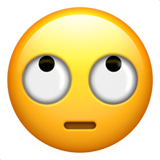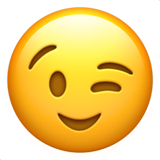Thank you for the suggestion!! I'll do that!!robotman09 wrote:type because if you type them they can be used for both and are normally easier to read
Birds of Feather/Ornithology
- crabnebula143
- Member

- Posts: 293
- Joined: November 26th, 2008, 9:54 am
- Division: Grad
- State: PA
- Has thanked: 0
- Been thanked: 0
Re: Birds of Feather/Ornithology
BC / Harriton High School
'We say we love flowers, yet we pluck them. We say we love trees, yet we cut them down. And people still wonder why some are afraid when told they are loved.'
'Having dined on their companions, they now lie at the center of the cluster, waiting for more food to arrive.'
'We say we love flowers, yet we pluck them. We say we love trees, yet we cut them down. And people still wonder why some are afraid when told they are loved.'
'Having dined on their companions, they now lie at the center of the cluster, waiting for more food to arrive.'
- Deeisenberg
- Exalted Member

- Posts: 237
- Joined: April 29th, 2007, 7:23 pm
- Division: Grad
- State: PA
- Has thanked: 0
- Been thanked: 2 times
Re: Birds of Feather/Ornithology
It may have been slightly better from the perspective of an event supervisor, however it is undeniable that it basically, whether intentionally or not, gave a huge middle finger to the people who had already made binders which they had put countless hours into. They removed the ability for competitors to compile information by limiting it so much. It also means that event supervisors can't make their tests as difficult, because no one will have resources as good as the those of the best teams last year. As for the possibility of leaving stuff at the previous station, that is really not that big a concern, and if it is, it shouldn't be. Also the elimination of binders and switch to MOSTLY Peterson's guides allows the event supervisors to have a better idea of what kind of information the students will have before competition. This discourages asking questions not answered in the book because they will often assume no one will know it. This encourages having almost all answers found in the book. That just turns the event into a contest of who can get through their book the fastest, and identification ability. While identification is important, it is still not good to put it so far over the amount of information that you have gathered. Overall it is a horrible rule change that was implemented this year, and I would be very annoyed if it continues into Ornithology next year.acbug3 wrote:From the perspective of an event supervisor/coach, the modified field guide for Herps was great. Teams that knew what they were doing had no problem and it meant less stuff for a team to forget when they're switching stations.
This was an event in 2002 and 2003, so it's been awhile. I found that the best guide for identification was the Sibley. It's a bit more expensive than the Audubon, but the pictures are very detailed and totally worth it. It's better to learn from the drawings and figures, rather than photographs, because then you really get an eye for the distinguishing characteristics of each species. There is also another volume to the Sibley that has the life history information. And find a CD of bird calls and start learning them. Actually, the summer is the best time to start this especially if you have a nature center or active birding club close by. These calls are way harder than the frogs, trust me.
Events: Herpetology, Fossils, Entomology, Rocks & Minerals, Ornithology, Ecology
Nationals 2008: 1st in Herpetology
Nationals 2009: 1st in Herpetology, 2nd in Fossils
Harriton Class of 2010
Nationals 2008: 1st in Herpetology
Nationals 2009: 1st in Herpetology, 2nd in Fossils
Harriton Class of 2010
- dickyjones
- Exalted Member

- Posts: 181
- Joined: March 4th, 2005, 2:49 pm
- Division: Grad
- Has thanked: 0
- Been thanked: 0
Re: Birds of Feather/Ornithology
I disagree with the idea that by removing the binder, event supervisors are forced to create easier tests. While some event supervisors may see the rules this way, the rules in no way restricted what was tested in the event from last year to this year. If the event supervisors decided to dumb down the event, the rules are not to blame. I'd prefer if a field guide remained for there to be more specific definitions. By the definition of field guide on soinc, I'm not sure whether a full Herpetology textbook would be allowed or not.
However, I would argue for the use of binders in events just due to their educational value. When binders are used, the event becomes much more oriented on the tasks of researching and organizing information logically. While without a binder, teams still can research and work on the organization of information; most teams are dissuaded from pursuing this as much when binders are restricted. And as binders are becoming more rare in science olympiad events, I think this important skill is being downplayed. Though the majority of people competing in the taxonomy events won't major in zoology in their future (though I'm actually somewhat considering pursuing entomology), nearly all students participating in the event will use the research skills learned in their future.
However, I would argue for the use of binders in events just due to their educational value. When binders are used, the event becomes much more oriented on the tasks of researching and organizing information logically. While without a binder, teams still can research and work on the organization of information; most teams are dissuaded from pursuing this as much when binders are restricted. And as binders are becoming more rare in science olympiad events, I think this important skill is being downplayed. Though the majority of people competing in the taxonomy events won't major in zoology in their future (though I'm actually somewhat considering pursuing entomology), nearly all students participating in the event will use the research skills learned in their future.
VHSSO Veteran!
Events: Ecology, Herpetology, Cell Bio, Entomology, Sounds of Music, Circuit Lab, Chem Lab, Disease Detective, Dynamic Planet, Five Star, EggONaut, Enviro Chemistry, Fermi, Quantum Quandaries!
Nationals: Wichita: Ecology-4, Entomology-5, Team-11; DC: Sounds-1, Team-11
Events: Ecology, Herpetology, Cell Bio, Entomology, Sounds of Music, Circuit Lab, Chem Lab, Disease Detective, Dynamic Planet, Five Star, EggONaut, Enviro Chemistry, Fermi, Quantum Quandaries!
Nationals: Wichita: Ecology-4, Entomology-5, Team-11; DC: Sounds-1, Team-11
- acbug3
- Member

- Posts: 4
- Joined: May 14th, 2001, 7:02 pm
- Division: Grad
- State: PA
- Has thanked: 0
- Been thanked: 0
Re: Birds of Feather/Ornithology
I competed in Herps and Birds (among others) back in the days of the binder and the field guide, and now I'm coaching and writing tests for the events. Really, the loss of the binder is not as much of a handicap as it seems. You're still doing research and adding to the field guide. Just the act of putting together the resource and finding the information helps you learn it, even if you can't take that binder to the test with you. Yes, there are size limits, but if you don't know it you're not going to find it in the 1.5 minutes I'm giving you at each station. I really try to coach and test these events like a college course in Herpetology/Ornithology/Entomology etc. The identification is important, but so is knowing something about the greater subject of the event.
As for the field guides that showed up when I was running the event this year - they were all within the spirit of the rules. Most people used the Peterson and added tabs, sticky notes, index cards, whatever. There was the occasional larger book with pictures, but that wasn't an advantage. Knowing your resource, no matter what it is, is key.
For Birds, it could really go either way: binder and/or field guide. Regardless, you should be learning ornithology along with your identification. I can guarantee that I will never let the field guide rules get in the way of me making the most comprehensive test possible.
As for the field guides that showed up when I was running the event this year - they were all within the spirit of the rules. Most people used the Peterson and added tabs, sticky notes, index cards, whatever. There was the occasional larger book with pictures, but that wasn't an advantage. Knowing your resource, no matter what it is, is key.
For Birds, it could really go either way: binder and/or field guide. Regardless, you should be learning ornithology along with your identification. I can guarantee that I will never let the field guide rules get in the way of me making the most comprehensive test possible.
- Deeisenberg
- Exalted Member

- Posts: 237
- Joined: April 29th, 2007, 7:23 pm
- Division: Grad
- State: PA
- Has thanked: 0
- Been thanked: 2 times
Re: Birds of Feather/Ornithology
As someone who spent, along with others, several hundred hours preparing our Herpetology binder last year, I can tell you, while it may not be IMPOSSIBLE to have as much information in your book as in your binder, it is nearly so. Even if you are able to obtain all of the information, you are still left with a severe handicap due to the fact that in order to fit that much information into the book, it will be smushed into such a small space that it will be nearly impossible to organize it as effectively as could be done in a binder.acbug3 wrote:I competed in Herps and Birds (among others) back in the days of the binder and the field guide, and now I'm coaching and writing tests for the events. Really, the loss of the binder is not as much of a handicap as it seems. You're still doing research and adding to the field guide. Just the act of putting together the resource and finding the information helps you learn it, even if you can't take that binder to the test with you. Yes, there are size limits, but if you don't know it you're not going to find it in the 1.5 minutes I'm giving you at each station. I really try to coach and test these events like a college course in Herpetology/Ornithology/Entomology etc. The identification is important, but so is knowing something about the greater subject of the event.
As for the field guides that showed up when I was running the event this year - they were all within the spirit of the rules. Most people used the Peterson and added tabs, sticky notes, index cards, whatever. There was the occasional larger book with pictures, but that wasn't an advantage. Knowing your resource, no matter what it is, is key.
For Birds, it could really go either way: binder and/or field guide. Regardless, you should be learning ornithology along with your identification. I can guarantee that I will never let the field guide rules get in the way of me making the most comprehensive test possible.
Events: Herpetology, Fossils, Entomology, Rocks & Minerals, Ornithology, Ecology
Nationals 2008: 1st in Herpetology
Nationals 2009: 1st in Herpetology, 2nd in Fossils
Harriton Class of 2010
Nationals 2008: 1st in Herpetology
Nationals 2009: 1st in Herpetology, 2nd in Fossils
Harriton Class of 2010
- soobsession
- Member

- Posts: 407
- Joined: March 21st, 2009, 2:33 pm
- Division: C
- Has thanked: 0
- Been thanked: 0
Re: Birds of Feather/Ornithology
hmmm....ill probably split up the list with my partner...then ill make a huge binder. probably ten times bigger than my fossils binder which was already hard to lug around  making the binder will already help me memorize the birds...or should...lets start studying
making the binder will already help me memorize the birds...or should...lets start studying 
"Do or do not. There is no try" -Yoda


-
kp9ssa
- Member

- Posts: 201
- Joined: March 22nd, 2009, 7:51 am
- Division: B
- Has thanked: 0
- Been thanked: 0
Re: Birds of Feather/Ornithology
i thought u were only allowed to bring a book. thats what they let us bring because it was a trial event at one of the invitationals
States
1st- Anatomy
4th- Dynamic Planet
2nd- Water Quality
2nd- Write it Do it
Team Overall: 1st
1st- Anatomy
4th- Dynamic Planet
2nd- Water Quality
2nd- Write it Do it
Team Overall: 1st
- croman74
- Member

- Posts: 876
- Joined: December 31st, 2008, 5:31 pm
- Division: C
- State: MI
- Has thanked: 0
- Been thanked: 0
Re: Birds of Feather/Ornithology
Nobody knows what they'll let us bring yet. The rules aren't made.
My 2010 Events
Elevated Bridge-7th
Trajectory-1st
"Why does Sea World have a seafood restaurant?? I'm halfway through my fish burger and I realize, Oh man....I could be eating a slow learner." -Lyndon B. Johnson

Elevated Bridge-7th
Trajectory-1st
"Why does Sea World have a seafood restaurant?? I'm halfway through my fish burger and I realize, Oh man....I could be eating a slow learner." -Lyndon B. Johnson

- crabnebula143
- Member

- Posts: 293
- Joined: November 26th, 2008, 9:54 am
- Division: Grad
- State: PA
- Has thanked: 0
- Been thanked: 0
Re: Birds of Feather/Ornithology
Does anyone know any good websites for bird calls?
Thanks.
Thanks.
BC / Harriton High School
'We say we love flowers, yet we pluck them. We say we love trees, yet we cut them down. And people still wonder why some are afraid when told they are loved.'
'Having dined on their companions, they now lie at the center of the cluster, waiting for more food to arrive.'
'We say we love flowers, yet we pluck them. We say we love trees, yet we cut them down. And people still wonder why some are afraid when told they are loved.'
'Having dined on their companions, they now lie at the center of the cluster, waiting for more food to arrive.'
Who is online
Users browsing this forum: No registered users and 2 guests

